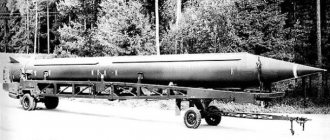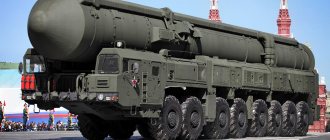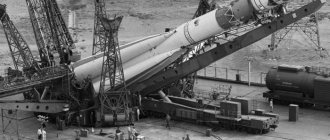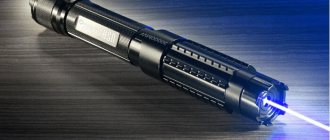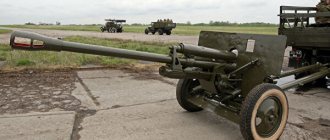The most powerful missile on Earth today is the RS-36M or SS-18 “Satan” (according to the classification of NATO experts); according to the Russian designation system, the weapon is called “Voevoda”. It has been in service with the Strategic Missile Forces from the late 70s to the present day.
This is the most dangerous missile for potential enemies, since there is no unattainable point on Earth for it, and in a matter of seconds its warhead will wipe out all life within a radius of 500 km2. Therefore, in the West, the RS-36M is considered the creation of the devil. The presence of such weapons prevents aggression from Western “partners” and serves as a deterrent to the outbreak of a global war.
Story
The two-stage Satan intercontinental ballistic missile was developed on the basis of another R-36 missile, but the designers made significant improvements. The design of the weapon began in 1969, and the assembly of experimental samples was completed by the end of 1975.
In 1970, changes were introduced to the design to improve the reliability of the main parts and equipment. In the middle of the same year, all regulatory authorities approved the final design of “Satan” and Yuzhnoye Design Bureau received permission to produce the modernized RS-36M. The last test launches were made at the end of November 1979.
The Satan missile was created by specialists from the Yuzhnoye design bureau, headed by M.K. Yangel, and after his death - V.F. Utkin. A completely unique intercontinental missile with improved technical parameters was designed.
When launching rockets with a large mass, specialists were faced with the problem of their depreciation in the silos.
The designers of the legendary Spetsmash Design Bureau decided to use compressed gas to give acceleration at the start. A similar principle was called mortar launch, which was used for the first time for weapons of this size and weight. The use of such a scheme significantly reduces the mass of the combat unit and the costs of its launch.
In addition, specialists created shock absorbers that made it possible to launch more massive rockets than Satan. Thanks to its unique launch method, the RS-36M Voevoda was at least 30 years ahead of all existing missile systems in the world.
The developers from Yuzhnoye Design Bureau and Spetsmash Design Bureau were also joined by Muscovites from KBTM. Project manager V. Soloviev proposed a pendulum mounting system in the silo. The project was approved by the Ministry of General Machinery and allowed for production, but it was the Spetsmash development with a mortar launch method using reinforced shock absorbers that was accepted in its final form.
The final R-36M design included 4 types of warheads:
- single-block MS 15F171 with BB 15F172 – capacity more than 20 Mt;
- MIRV 15F173 includes 10 unguided high-speed combat warheads (BB) 15F174 - the power of each is more than 0.8 Mt;
- GC 15F175 with a “light” BB 15F176 - power about 8.3 Mt;
- 15F177 multiple warhead with six 15F174 unguided BBs and four 15F178 guided BBs.
There were other developments, but they did not make it to series.
Description of the ballistic missile
The world's most powerful missile, the R-36M, was put into service back in 1975. In 1983, a modernized version of the missile, the R-36M2, was put into development, which was called “Voevoda”. The new model R-36M2 is considered the most powerful in the world. Its weight reaches two hundred tons, and this is comparable only to the Statue of Liberty. The missile has incredible destructive power: the launch of one missile division will have the same consequences as thirteen thousand atomic bombs similar to those dropped on Hiroshima. In addition, the most powerful nuclear missile will be ready for launch in just a few seconds, even after many years of mothballing the complex.
Mine installation technology and testing
To conduct full tests of the modernized missile system, a special launch pad was created at Baikonur in 1971. During the testing process, a dummy rocket was used, since it is impossible to test such a weapon without catastrophic consequences for the environment.
Testers tested the ability of “Satan” to fly to a height of at least 20 meters. The performance of the engines and the timeliness of their starting were also checked. A total of 43 launches were carried out, 36 of which were successful, but 7 times the dummy rocket fell to the ground.
The designers provided a revolutionary installation method for our country according to the plant-start scheme. It provided for the complete assembly of the Voevoda at the factory, followed by installation directly into the mine.
As a result, the time the complex spent without protection was reduced.
The main risk remained only at the stage of delivery of the complex to the launch site. “Satan” was brought by rail, the container was loaded without the use of a crane onto a special transport trolley. Using this trolley, it was delivered to the silo and automatically mounted.
The missile was directly docked with its warhead after it was refueled. To do this, about 180 tons of toxic and rather aggressive substances were poured into the tanks. After connecting the parts of the rocket, the roof of the silo was closed, sealed and handed over to the guard missilemen.
New statistics
The first orbital flight of a combination of the accelerator and the Starship spacecraft could be made as early as this year, for which SpaceX will need permission from the US Federal Aviation Administration. An unsuccessful test will be another useful lesson for the American company and another reason for ridicule and
ill-wishers. If the flight is successful, then in the future SpaceX, with the help of Starship, will try to launch satellites of the global Starlink system.
So far, less than two thousand such devices have been sent into space, while at least 12 thousand are planned to be launched in total. There is no doubt that using the capabilities of Starship will allow SpaceX not only to complete the deployment of Starlink in a short time, but also to accumulate statistics on successful launches of a reusable transport system.
Design Features
Especially for the new rocket, KB Energomash designed the RD-264 engine, consisting of 4 RD-263 rocket launchers with one chamber. It was installed on the first stage of “Satan”. The second stage was equipped with a single-chamber main engine RD-0228, created by specialists from the Chemical Automation Design Bureau, headed by A. Konopatov.
Further production was carried out at Yuzhmash in Dnepropetrovsk. Additionally, there is a four-chamber steering motor. Propulsion systems operate on unsymmetrical dimethylhydrazine with nitrogen tetroxide oxidizer. The intermediate pan separates the fuel tank and the oxidizer container.
The stages are separated according to the principle of gas dynamics - the explosive bolts connecting the parts of the rocket are activated, and the gases from the pressurization of the fuel tanks are ejected through the windows intended for this purpose.
Protected by a casing, a network of cables and a pneumohydraulic system are carried along the body.
The digital computing system installed on board the Satan is responsible for the shooting accuracy. Combat equipment is characterized by increased reliability, accuracy, nuclear safety during storage, fire safety, and resistance to various types of radiation.
If potential adversaries use a nuclear strike on the R-36M's basing area, the heat-protective coating will help overcome the contaminated area, and gamma-neutron sensors will turn off the power plant, but the engines will remain in working order. The missile will continue to move outside the danger zone and hit the previously designated target. Thus, “Satan” is low-vulnerable to enemy nuclear forces and missile defense systems.
Design solutions have improved such characteristics as shooting accuracy by three times compared to the previously created R-36. The preparation time for launch was reduced by almost 4 times. Launcher protection has been improved 30 times.
Performance characteristics
TTHR-36M “Satan” is unique and still has no analogues in the world. The missile has excellent combat and technical characteristics. The most significant of them are presented in the table.
| Rocket length, m | 34,3 |
| Diameter, m | 3 |
| Weight at start, t | 211,4 |
| Head mass, t | 8,47 – 8,73 |
| Fuel mass, t | 180 |
| Stage I liquid fuel, t | 150,2 |
| Stage II liquid fuel, t | 37,6 |
| Dilution stage liquid fuel, t | 2,1 |
| Oxidizer | nitrogen tetroxide |
| Energy-weight perfection coefficient Gpg/Go, kgf/tf | 42.1 |
| Maximum missile flight range, km | 16000 |
| Number of steps | 2 |
| Flight reliability factor | 0,974 |
| Reliability level | 2 |
| Extended service life, years | 25 |
| Warranty service life, years | 15 |
| Air temperature for the possibility of combat use of a missile | from -50 to +50°С |
| Wind speed for combat use, m/s | up to 25 |
| Rocket flight speed, m/s | up to 3120 |
| Number of combat warheads in one missile | 10 |
| Control system | inertial autonomous |
| Startup type | Mortar launch from a silo |
| Radius of guaranteed accurate hit to the target, m | 1 000 |
Despite repeated attempts by our so-called Western “partners” to destroy or significantly reduce the stock of these missiles in the country’s nuclear shield system, “Governors are still serving on the borders of Russia. They will work for the defense of the country in the Strategic Missile Forces of the Russian Federation until 2026.
Combat use
Russia currently has 75 Satan ballistic missile systems in service. The missiles contain 750 nuclear warheads. In total, the Russian nuclear shield has more than 1,670 warheads, and half of them are “Satan”. But since 2015, some of the missiles of this modification are gradually being replaced by more modern combat missile systems.
The Satan has never been used in combat due to the fact that this very powerful deadly weapon can cause irreparable damage to the environment and humanity as a whole. The use of even one missile can lead to the disappearance, for example, of an entire state in the United States. In the mid-80s. The R-36M was massively replaced with improved units.
Instead of disposal due to its high cost, it was decided to use them to launch artificial satellites.
The R-36M is inaccessible to electromagnetic pulses, since the Voevoda control system is duplicated by pneumatic and electronic automatic weapons. To overcome the enemy's missile defense, "Satan" was equipped with decoys, both light and quasi-heavy, dipole reflectors and active jammers.
Thanks to the efforts of Soviet scientists and designers who worked on the creation of the Satan or Voevoda ballistic missile system, the most unique and powerful weapon on the planet was created. These intercontinental missiles are the pride of the Russian Strategic Missile Forces in our time.
Despite the enormous efforts made, potential adversaries of the Russian Federation have so far been unable to create anything comparable in power and efficiency. Russia need not fear for the safety of our Motherland and its inhabitants.
Air Force cargo carrier: back to the future from the 1960s?
About half a century ago, the American Air Force suddenly realized that transporting troops by rocket was radically faster and often more convenient than by military transport aircraft. The last one sounds strange, but it's a fact. The fact is that the range of military transport Hercules with a heavy load on board is not so great. This means that in order to deliver something to a remote part of the world, intermediate landings are needed. If you include them all in the schedule, it turns out that delivering people or cargo ten thousand kilometers can take more than one day, but the military values the fastest possible response.
It is very likely that the concept of "instant" transfer of forces on a rocket was influenced by the science fiction of the time, namely Heinlein's Starship Troopers. Interestingly, the original title of the book was Starship Troopers
" Now it can be translated as “Starship Paratroopers” - at least, it is Elon Musk’s Starship that makes the very possibility of quickly transporting military personnel to anywhere on the planet truly real.
We don't know why the US Air Force designer depicted MAZ-like trucks next to the stylized Starship
Image source: US Air Forces
Of course, a number of limitations must be taken into account here. Firstly, Starship consists of two stages: only the second, integrated with the ship, can transport troops. There are plans to have a pressurized volume of more than 1,100 cubic meters and the ability to transport up to several hundred people on one flight. However, the second stage by itself will not be able to take off from an unprepared point on the surface of the Earth: there will not be enough fuel for this.
Yes, theoretically, the second stage without a payload, but with a full charge of methane and oxygen, can actually take off and then land at the desired point. Therefore, after delivering cargo or people to a remote US military base, the fueled upper part of Starship is able to return to the US, where it will be combined with the first stage of the same carrier. And, accordingly, they will again be used for transporting goods.
But if there is no oxygen and methane at the military base where the delivery takes place, no second part of the Starship will be able to return from there. Creating storage capacity for liquid oxygen and methane is not so difficult: liquefied methane in the United States is already used on a daily basis, but storing and transporting liquid oxygen is not fundamentally more difficult. But the organization of launch tubes, a refueling system for a rocket on the take-off field and other “small details” will not be so simple. Cramming it into every Bagram on the globe is not a cheap task even for the US Air Force, with its budget of 200 billion dollars a year (three of Russia’s total military budgets).
Deomos (in the picture) is even inferior in complexity to conventional offshore drilling rigs “> Refueling the 120-meter Starship in remote parts of the world will be an indispensable condition for its use as a military transporter. However, nothing is impossible in it. Platforms like Deomos (in the picture) are even inferior in complexity to conventional offshore drilling rigs
Image source: SpaceX
Secondly (and most importantly), it should be understood that such transportation can only be carried out outside the context of active hostilities with developed countries. That is, if you need to deliver cargo to a conditional Afghanistan, this is still possible, since it does not have (or almost no) working MANPADS, and it is not so easy to shoot down a Starship with a 1946 model DShK.
But if we are talking about situations where a conflict with China or Russia is possible, then the launch of a Starship-type transport from Russian missile attack warning satellites will look quite similar to, for example, the launch of a ballistic missile with a nuclear warhead from the Gulf of Mexico (the SpaceX cosmodrome is located nearby with a bay). How to understand whether this is an innocent transfer of forces or the start of a nuclear war?
Of course, with more frequent civilian Starship flights, the tension over such launches will lessen, but it is unlikely that they will begin daily flights in the next ten years.
